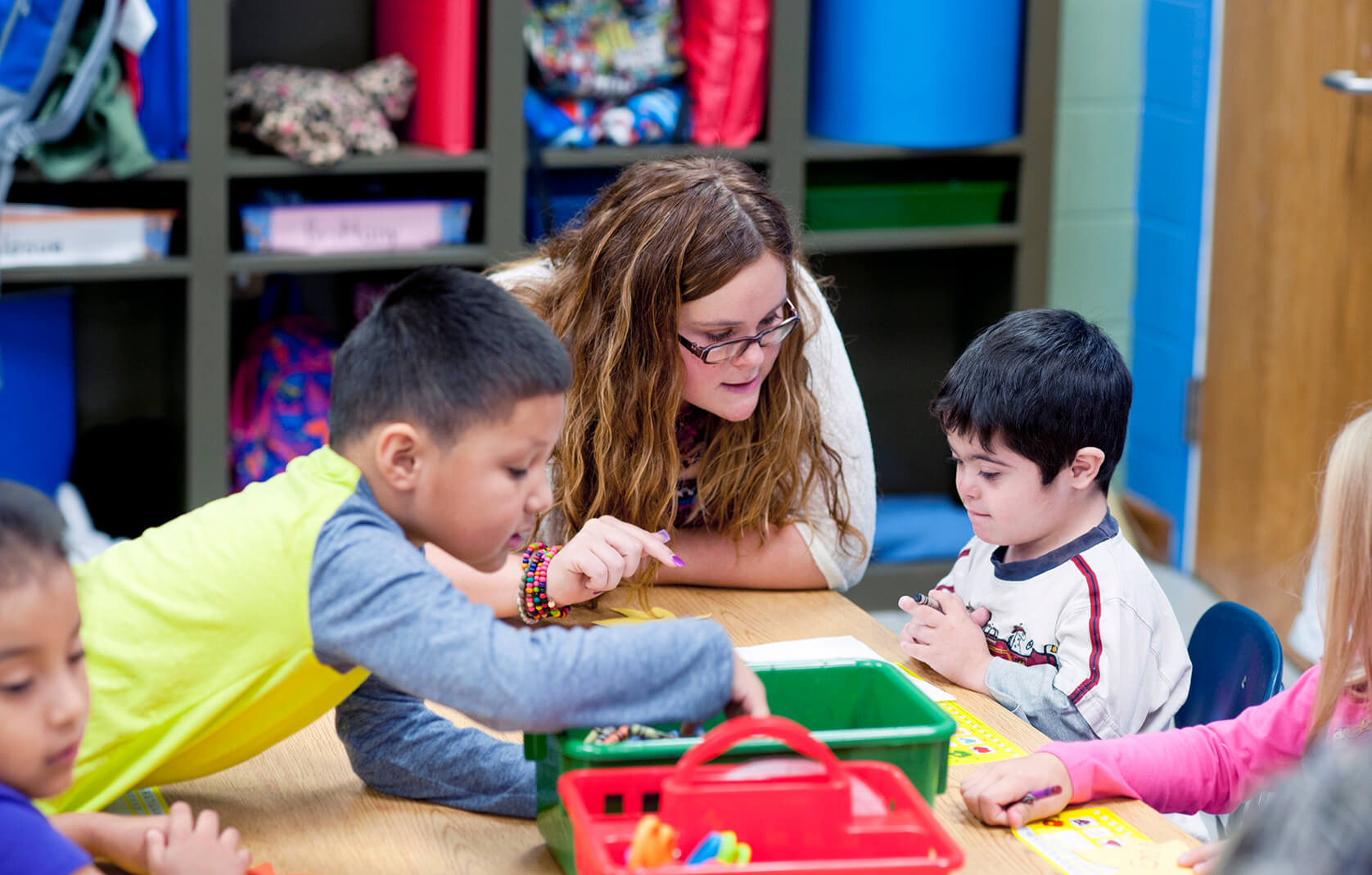It can be difficult to educate students with disabilities in an innovative and effective way. But NCLD recently visited two very different schools that were doing just that. These schools serve two very different populations, in two different parts of the country. We found an important commonality, though: an inclusive culture that was created with purpose.
NCLD has been working to identify promising 21st-century learning practices in schools. We’re focused on how these practices serve and include students with disabilities. We’ve worked with educators, experts, and analysts across the country and have identified a number of schools doing interesting work in this area. In the past month, we visited two of these schools — Evergreen Community Charter School in Asheville, NC, and Envision Academy of Arts and Technology in Oakland, CA. Evergreen serves students from kindergarten through eighth grade, primarily from middle-income white families in a relatively rural setting. Envision serves students in grades 9–12, primarily from low-income families of color in an urban setting.
Despite their differences, both schools have a culture that draws in a particular type of educator: those who value inclusion as a pivotal component to the success of all students. This inclusive culture isn’t a matter of simple good fortune. It was a by-product of specific and proactive decisions the school made. We asked students, educators, and administrators about how these schools serve students with disabilities. And it was clear that these schools don’t consider students with disabilities as separate from other students. They are simply part of the school community.
Culture as a Decision: The Evergreen Way
At Evergreen, students with disabilities routinely outperform students with disabilities in neighboring schools on traditional academic measures. More impressively, though, is the school’s strong focus on Expeditionary Learning (EL) as a way to serve diverse learners.
The EL model encourages students to master content in a nontraditional way: by completing a cross-subject “expedition” project that culminates in weeks of work on a specific topic. Evergreen is led by Susan Mertz, Ph.D., who said on our visit that they “don’t lower expectations for students with disabilities. … We simply make it accessible to them. … We change the modes of instruction as opposed to changing what we expect of kids.” Evergreen does this by explicitly focusing on including all students in the EL process through rotations of roles within student teams, and by implementing the principles of Universal Design for Learning (UDL).
Culture as a Decision: The Envision Way
Similarly, Envision isn’t shy about embracing a culture of social justice, inclusion, and respect for students and educators. This is apparent the moment you walk into the school. Decorations lining the walls include quotes by civil rights heroes and copies of college acceptance letters. Time is set aside for teacher-led, collaborative professional development to ensure that teachers’ voices are valued. The school’s pedagogical philosophy relies strongly on using the city of Oakland and the learning opportunities it affords as an extension of the classroom. With these elements as part of the learning experience, it’s no surprise that students select projects relating to social issues in their community, that teachers feel empowered, and that almost all graduating students are accepted to college. (The great majority of those are first-generation college students!)
It’s easy to focus on specific initiatives that seem promising. But it’s also important to examine and recognize the cultural elements that empower those initiatives to work effectively. These schools have worked hard to develop a culture of inclusion and community. Culture is not some intangible factor that is either there or not there — it is the quality of the soil through which initiatives grow, and its quality is determined by explicit decisions that create a school’s culture. This discovery is perhaps our biggest takeaway and our biggest hope, as we know that those decisions can be replicated elsewhere to create inclusive and thriving school cultures.


